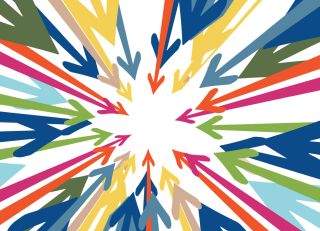Career
Fight Back Against 'Microstress' in Your Work and Life
Microstress will wear you down in ways you may not even notice.
Posted March 30, 2023 Reviewed by Vanessa Lancaster
Key points
- Microstresses are small, continual stresses that we are typically unaware of, that wear us down over time.
- Be aware of "contagious" negative emotions from those closest to you, and take steps to reduce their impact.
- Understanding microstress can help you create less stress for the people in your work and home life.

I love Rob Cross’s writings on collaborative overload. I was excited to learn that Cross, the Edward E. Madden Professor of Global Leadership at Babson College and former Harvard Business Review editor Karen Dillon, have a new book, The Microstress Effect.
Cross and Dillon believe "microstress" is “a force in our everyday lives that we aren’t even aware of.” We can’t help but notice the big things in our world that cause us unusual amounts of stress and pain, but we may not notice small, continual stresses that wear us down, day after day. According to Cross's research, this relentless accumulation of small daily stresses is so substantial that it “threatens to derail otherwise promising careers and lives.”
As one would expect from a book penned by a top leadership expert, The Microstress Effect packs extremely specific tips and strategies for people who struggle to navigate today’s complex work contexts. That said, I’d like to share some of the gems that apply to work and our greater lives.
1. Microstress comes from the people we are closest to, personally and professionally.
This was one of the most eye-opening aspects of the book for me. The connections in our lives “trigger an avalanche of microstress that extends far beyond a lengthy to-do list or full calendar.” And it’s not just due to the various related demands or challenging conversations. Layers of emotional complications make our more intimate interactions the most draining.
Cross and Dillon emphasize the phenomenon of “emotional contagion.” Our sensitive brains pick up and absorb the emotional states and stress of those around us. As a “highly sensitive person,” I particularly relate to this. You can build in buffers to contagious stress by intentionally spending more time with people who give you energy and joy. If possible, try to limit or minimize negative exposures, and take steps in the moment to shake off or let go of “contagious” negativity rather than carry it forward through your life.
2. Be aware of how you create microstress for others.
One story that really stood out was about a manager who sent an email request that sent an entire group into a tailspin. This note was sent at the end of the day with an urgent tone but very little detail. The entire team went into overdrive response, trying to figure out the request and get it done ASAP during an evening that should have been used to recover from work. Don’t be the person who sends an email like this if you can help it.
In contrast, another story shares how one leader dramatically improved the amount of inefficient, stressful communication habits on their team. Together, they brainstormed ways to decrease communication overload. Ideas included: putting the request and timeline in an email subject line; using bullets to communicate instead of lengthy paragraphs; no late-day emails, and my favorite: “don’t hide what you are asking for in the eighth paragraph.” I've been working on improving the quality of my work-related and personal emails. This is an easy way to decrease the stresses we unintentionally create for others.
3. An intentionally multi-dimensional life can make microstresses inconsequential.
At points throughout the book, the authors note that our lives get more complicated as we grow through our lives and careers. We have more responsibilities at work and home and less time for the activities and people that made our lives rich when we were younger and more “free.” This pattern makes us more vulnerable to microstress and can severely impact our health and well-being.
Cross and Dillon observe a notable group of “ten percenters” within the high performers that they studied. These people were more resilient to microstress because they somehow managed to protect “rich, multidimensional lives, through small moments of authentic connection through others.”
I was particularly intrigued by their suggestions in this area. For example, getting involved in fitness-promoting initiatives offered by your workplace (whether it’s a lunch hour boot camp, a running club, or some other fun, active activity) not only improves your health and ability to manage stress but connects you to people in your organization that you might not otherwise meet. This can build a robust network to draw on as you face work-related challenges.
One case study modeled how defining success through key roles in your life (i.e., being a physically healthy person, a family member, a concerned citizen, or a friend) can help you map out how to spend your time at work and outside work. One of the most effective ways of living a rich life in a limited time is to blend roles, for example, spending time with friends on a community project you all care about.
In the authors' words, “to enjoy overall well-being, you must develop strategies not only to combat stress but also to help you live the life you want to live through resilience, physical health, and purpose.” This reminder, for me, was the most powerful message I got from this very useful book.




